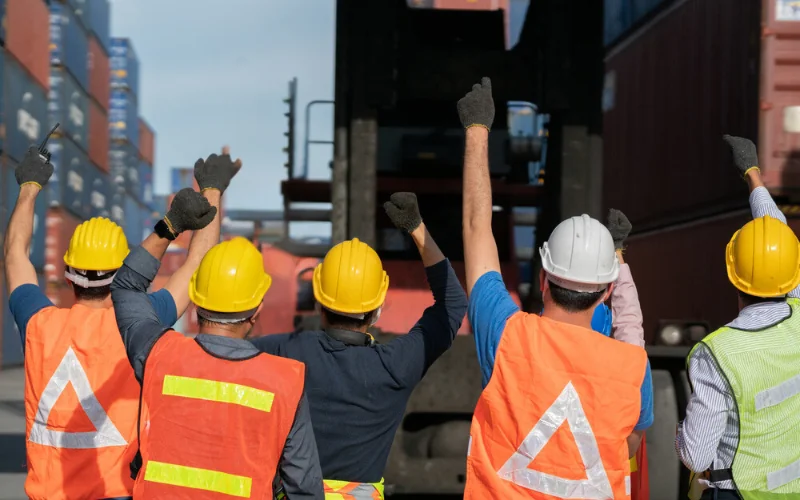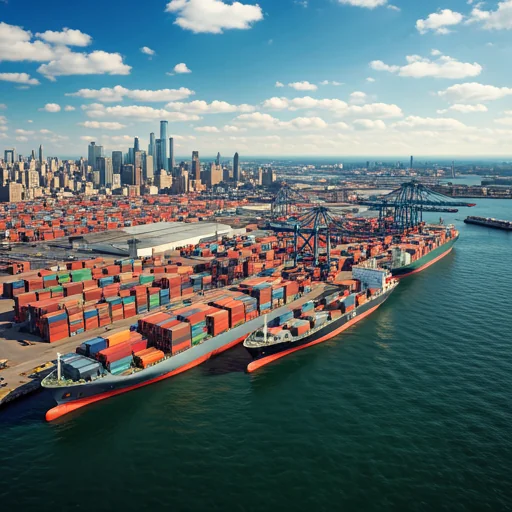So We Averted Another Port Strike, Now What?
For the past two months, the logistics industry has been waiting with bated breath to see if the International Longshoremen’s Association (ILA) and the United States Maritime Alliance (USMX) could reach an agreement to stop the East Coast ports from shutting down once again.
On Thursday, Jan. 9, the two groups reach a tentative agreement on a new six-year master contract that will replace the extended contract created after the strike in October 2024. Without a deal being reached, the workers would have gone on strike Jan. 16.
According to a joint statement, the groups state, “The two sides agreed to continue to operate under the current contract until the union can meet with its full Wage Scale Committee and schedule a ratification vote, and USMX members can ratify terms of the final contract.”
While many are relieved to see the two groups come to an agreement, there are still some questions to be answered, so what’s next for the port workers and the industry as a whole?

Agreement Must Be Ratified
Although the ILA and USMX have reached a deal, it is not complete until it is ratified by the union’s membership, which will likely not be until the summer.
In the previous October agreement, both sides agreed to a 62% pay increase over the next four years, with container royalties and benefits still needing to be worked out.
With the agreement now complete, the ILA union members can now see what the two sides of the conflict have put together.
There may be some contention among members since the issues of automation have stirred fear in port workers over losing their jobs. Most likely, however, the union members will ratify the agreement.
Automation To Become A Major Factor
Along with pay, automation was the biggest issue that left the two groups at an impasse.
The details of the deal have not been revealed, although semi-automation is not off the table. The agreement over automation will still protect ILA jobs but allow for the growth and modernization of the East and Gulf Coast ports, leading to more substantial and efficient supply chains.
Workers will be able to work alongside the new technology rather than be pushed out by it, benefitting both employers and employees.
“This is a win-win agreement that creates ILA jobs, supports American consumers and businesses, and keeps the American economy the key hub of global marketplace,” the joint statement said.

Retail For Shippers And Economists Everywhere
Many are relieved that another strike has been averted.
The looming tariffs from the upcoming administration, couple with the threat of another shutdown, could have caused shortages, price increases for consumers, and disruptions to the global supply chain.
West Coast ports are still recovering from the backlog caused by the first work stoppage in October, when many shippers steered their freight to ports on the other coast to avoid interferences to their supply chains.
However, the ports were already experiencing capacity issues when, earlier in 2024, container traffic was avoiding Red Sea attacks by taking longer routes. The avoidance of another strike will allow ports to finally reach a semblance of normalcy after months of experiencing high volume levels.
Resilience In The Logistics Industry
When there are issues at ports, the whole supply chain reels from the effects.
The disagreement between the ILA and USMX highlights the importance of resiliency in supply chains and contingency planning in freight.
While the port strikes seemed like the end of the world as we knew it, companies seeing the forest for the trees were able to divert operations to other ports or ship their products ahead of time.
Both the October and the canceled January strikes highlight the need for businesses to plan when adversity is known to lie ahead. Companies must be prepared to adapt quickly to port closures, labor disputes, and any other interruptions to maintain operations and minimize any financial losses.

While the agreement provides relief and offers hope for the future, the deal’s final ratification is still pending.
However, the agreement marks a step towards a supply chain that can better adapt to future challenges in a market that is constantly evolving and position the U.S. to have a more competitive and stronger port system that benefits the national and global economy.


